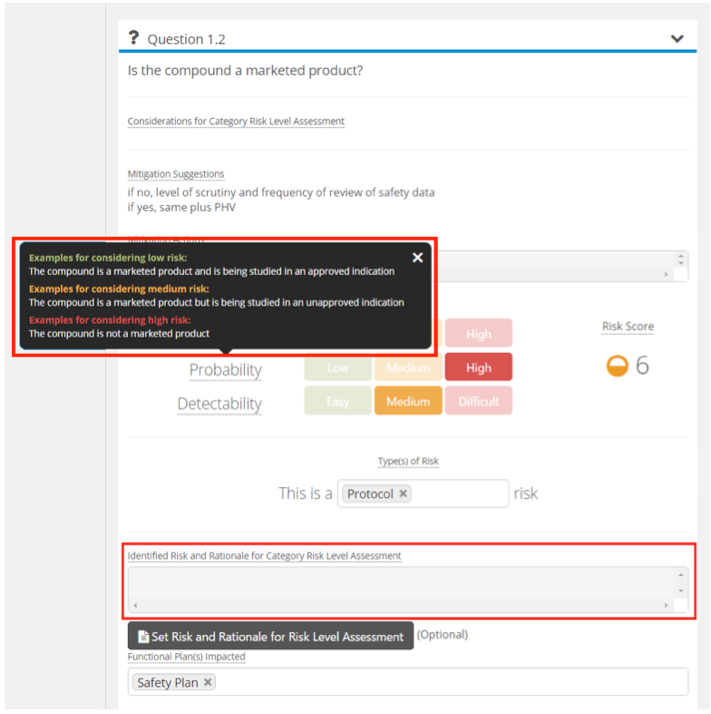Excel-Based RACTs Go To The Cloud
TransCelerate’s Risk Assessment and Categorization Tool (RACT) has exhibited usefulness with study teams and has guided organizations, such as Cancer Research UK (CRUK) to adopt their own RBM questionnaires
TransCelerate has established the industry standard for risk-based assessment tools to assist study teams with defining, categorizing and quantifying clinical trial risk. Since its release, TransCelerate’s Risk Assessment and Categorization Tool (RACT) has exhibited usefulness with study teams and has guided organizations, such as Cancer Research UK (CRUK) to adopt their own RBM questionnaires. However, Excel based tools present many limitations during execution.
To elaborate, Artem Andrianov of Cyntegrity, an RBM technology enterprise, recently wrote an article delineating deficiencies with Excel based tools. Most notably, the article argues that Excel-based RACTs introduce subjectivity, difficulty in visualizing study risk, creating challenges with collaboration efforts, lack audit trails, and are not validated.
In order to address these deficiencies, Andrianov, in collaboration with the RBM Consortium, developed a free technology-based RACT tool, @RACT. I’ve used TransCelerate’s RACT on numerous occasions, and have had the opportunity to also access and test out @RACT. This article will evaluate my experiences in using @RACT, and delineate its impact on clinical operations compared to Excel based RACTs.
Free RACT: @RACT
Based on TransCelerate’s RACT tool, @RACT is a free technology based tool to assist study teams with defining, categorizing and quantifying clinical trial risk. The system features a user-friendly layout (Figure 1) that contains the 13 risk categorization steps, and the ability for study teams to define study Impact, Probability and Detectability (IPD) and risk category completion status. Moreover, the system contains a sliding scale that enables teams to weigh the selected category against other categories.
Figure 1: Risk Categorization

What is particularly interesting about @RACT is that it enables study teams to standardize risk interpretation via a risk catalogue, which can reduce subjectivity; Figure 2 shows risk catalogue definitions for each subcategory under IPD risks, as delineated by a black popup box. The tool features some definitions from PPH Plus’ risk categorization catalogue, however, study teams can customize @RACT’s risk catalogue to their SOP infrastructures and cultures (if they choose to adopt the system internally). Figure 2 also illustrates text boxes where study teams can input risk mitigation plans, and elaborate on their rationale for completing individual risk categories.
Figure 2: Risk Specification

Figure 3 outlines a view for the study’s overall risk assessment once some, or all 13 risk categories are completed. This view contains overall and weighted visualizations based on risk, with high risk categories appearing as larger circles in red and vice versa for lower risk categories (in green). Study teams can also visualize IPD and risk scores for individual categories, and can generate a report delineating the entire RACT strategy. The system also contains an audit trail, assigned personnel tracking, and version control as the RACT is updated throughout the trial.
Figure 3: Overall Study Risk View

What @RACT Means for Study Teams
Reducing Subjectivity. A big challenge with Excel-based RACTs is that they does not provide specific examples of risk categorization. Implementing risk catalogs/definitions through technology can help study teams standardize their approaches towards interpreting risk on an organizational level.
Better Version Control and Collaboration. Tracking data and versions through Excel is antiquated, not validated, and poses issues with version control. Many cloud-based solutions are emerging to address the need for management to more accurately interpret and access aggregated insights. @RACT’s integrated collaborative tools and audit trails for clinical trial risk categorization allows for better version control and collaboration.
Enhanced Risk Amendments. Oftentimes (if not always) risk profiles change as a study takes course. Understanding how these risks change over time enables study teams to optimize their approaches by prioritizing risks that matter, and downgrading risks that were initially perceived as a priority. @RACT’s overall study risk categorization visualizations allow teams to compare how risks have changed over time, and gain an enhanced perspective on the bigger picture across all functions.
Easy Integration into RBM Systems and Aggregate Reporting. The beauty about technologically based systems is that they can seamlessly integrate into other systems for enhanced risk assessments, tracking, execution, and reporting.
Why is @RACT Free?
Andrianov said, “We’re offering this system for free to improve the overall risk management awareness in the industry. We have similar goals as TransCelerate to propagate proper clinical trial risk planning, but, we also want to enhance operability, quality and ease of use through our technology.”